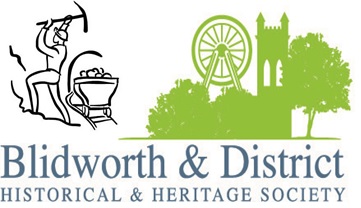Latest Article
I was a pupil at Joseph Whitaker School from 1968-1973; not a long time ago for some people but certainly history to my generation, and as our children are gearing up to returning to school this September I have found myself reflecting on the history of this school which has over 1200 pupils who would normally be gearing up for the well-earned school holidays over these next few weeks!
The Joseph Whitaker School opened on 9th January 1963 as a “Secondary Modern” school with 546 places but with 373 pupils on the roll. At that time the headmaster was Mr R Brookes – known to many students in my time as “Brooky” (and possibly other names I could not repeat). He was a stern man who not only was headmaster but also taught some subjects as well as being heavily involved in extracurricular activities, such as the choir.
When the school opened, they had a speech day on 6th July 1964 at which the guest was a Professor H.C. Dent. The speeches from that day appeared in the school’s magazine called “The Gateway” a copy of which can be found in the Society’s archives. The magazine written by the pupils at that time (1972) discussed the “Growth of the school” by looking at the past, present and future of the school. This was at a particular changing point for the school, as it moved from being a Secondary Modern School to a Comprehensive school.
The school takes its name from Joseph Whitaker (1850-1932), a famous naturalist and sportsman who lived at nearby Rainworth Lodge. There is a lot of history about the man; his gamekeeper Alfred Spinks who shot an Egyptian Nightingale; plus, local historian’s tales of the man and his life. But I find it interesting that when choosing the name for the school they chose a naturalist and sportsman – and today the school has changed again from my time into a Sporting Academy.
Prior to attending the Joseph Whitaker school, I like so many others attended Blidworth County Council school which later morphed into the Robert Jones school and now is the Blidworth Oaks Primary School. That school, as is Joseph Whitaker, is still entrenched within our villages and is providing pupils with an education that will enable them to enter into the adult world.
In the beginning Joseph Whitaker changed the way schooling was undertaken in our villages. Prior to 1963 pupils at BCC or Python Hill schools would have finished school at aged 15 (as my mum and her siblings did), entering the world of work straight from school. Then the 11+ examination and the leaving age was raised to 16; meaning that children passing the 11+ moved onto Grammar School and others (like me) went to Joseph Whitaker Secondary Modern. Students who were still at Primary school 11 years or over but under 15 years went to Joseph Whitaker (JW opened in 1961) as could no longer finish school at 15. The curriculum at that time was provided to 80% of secondary school children according to their aptitude and ability. The 16-year-old students would leave school or could remain in school and undertake the Certificate of Secondary Education qualification. Students also undertook training at Further Educational or Technical college rather than do formal education under the CSE programme.
“Jo Whit”, as it is often called, had many links within the local community, Blidworth County in Local Evening Institute work (I remember going to typewriting classes whilst at JW); the local employers, a lot who have now gone, such as NCB, factories and shops. The Miners Welfares and sporting clubs (many trophies were presented by Rufford Miner’s Welfare); the churches both Blidworth and Rainworth. This is still the case as of today. Also, many teachers who had taught at the primary schools moved down to JW, Miss Ricket; Mr Dixon were 2 such teachers – they had taught my mum (Mary Saville Blidworth CC school 1934-1942) & her siblings.
In the year I started at JW they issued all the first years with their own copy of “Prayers & Hymns for Schools”, a Gideon New Testament, and an introduction to banking. The school had started a National Savings Bank with the cooperation of the County Commissioner for National Savings. The curriculum at that time was provided to 80% of secondary school children according to their aptitude and ability. The grounds had a big variety of sporting areas/equipment: sports barn; gym; swimming pool; tennis; netball; badminton & squash courts; athletics track/competition areas; football/rugby/hockey/rounders fields. There were inter house school matches and other athletic programmes e.g. Walls sponsored Amateur Athletics Association Awards.
On 2nd of September 1971 the school opened as a Comprehensive School with 758 pupils on roll. The new lower Division buildings added 420 places and further additions to the middle division gave 990 places in total. A further 360 places were to be added in the years 1972/1973; plus, another increase in 1973/1974 bringing the total then to 1,650. It was at this time that the Gateway Magazine was published and the students contributed their stories, poems and articles about the Past-Present-Future of the school.
Currently JW school has over 1200 pupils on roll and in September 2020 they will pick up the reigns of their disrupted education and with the support of the staff and community those students will be outstanding. As the school motto, taken from the Whitaker family coat of arms “SPES ET FIDE” will reflect the HOPE for the pupils’ future and FAITH in their ability to rise to whatever challenges they meet.
Jayne Williams

